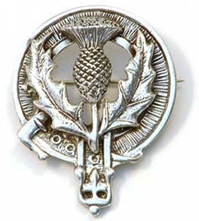|
Dublin Castle lies on Cork Hill, the highest
ground in the area, next to Temple Bar in the heart of historic
Dublin. Dublin Castle was first founded as a major defensive
work on the orders of King John of England in 1204, shortly
after the Norman invasion of Ireland in 1169, when it was
commanded that a castle be built with strong walls and good
ditches for the defense of the city, the administration of
justice, and the protection of the King’s treasure. Largely
complete by 1230, the castle was of typical Norman courtyard
design, with a central square without a keep, bounded on all
sides by tall defensive walls and protected at each corner by a
circular tower. Sited to the south-east of Norman Dublin, the
castle formed one corner of the outer perimeter of the city,
using the River Poddle as a natural means of defense along two
of its sides. The city wall directly abutted the castle’s
north-east Powder Tower, extending north and westwards around
the city before rejoining the castle at its south-western
Bermingham Tower. The Poddle was diverted into the city through
archways where the walls adjoined the castle, artificially
flooding the moat of the fortress's city elevations. One of
these archways and part of the wall survive buried underneath
the 18th century buildings, and are open to public inspection.
Through the Middle Ages the wooden buildings
within the castle square evolved and changed, the most
significant addition being the Great Hall built of stone and
timber, variously used as Parliament house, court of law and
banqueting hall. The building survived until 1673, when it was
damaged by fire and demolished shortly afterwards. No trace of
medieval buildings remains above ground level today, with the
exception of the great Record Tower (ca. 1228-1230); it the sole
surviving tower of the original fortification, its battlements
an early 19th-century addition.
"Castle Catholic" was a pejorative term
for Catholics who were considered to be overly friendly with or
supportive of the British administration.
United Irishmen General Joseph Holt, a
participant in the 1798 Rising, was incarcerated in the
Bermingham Tower before being transported to New South Wales in
1799.
Famously, the Irish Crown Jewels were
stolen from the Castle in 1907.
During the Anglo-Irish War the Castle was
the nerve centre of the British effort against Irish separatism.
On the night of Bloody Sunday in 1920, two Irish Republican Army
officers and a friend, Conor Clune, were killed, allegedly while
trying to escape, on the grounds of the Castle.
When the Irish Free State came into being
in 1922, Dublin Castle ceased to function as the administrative
seat. It served for some years as temporary Courts of Justice
(the Four Courts, the home of the Irish courts system, had been
destroyed in 1922). After the courts vacated the premises, the
Castle was used for state ceremonial. As President of the
Executive Council, Éamon de Valera received credentials there
from newly arrived ambassadors to Ireland on behalf of King
George V in the 1930s. In 1938, Douglas Hyde was inaugurated as
President of Ireland at the Castle. Inaugurations of subsequent
presidents took place there in 1945, 1952, 1959, 1966, 1973,
1974, 1976, 1983, 1990, and 1997. President Erskine Hamilton
Childers' lying-in-state took place there in November 1974, as
did that of former President Eamon de Valera in September 1975.
The castle is a tourist attraction and,
following major refurbishment, is also used as a conference
centre. During Ireland's presidencies of the European Union,
including most recently in the first half of 2004, it has been
the venue of many meetings of the European Council. The crypt of
the Chapel Royal is now used as an arts centre, and occasional
concerts are held in the grounds of the Castle. The complex of
buildings is usually open to the public, except during state
functions.
|



